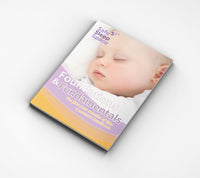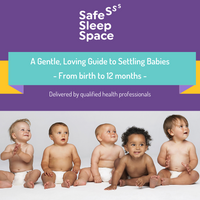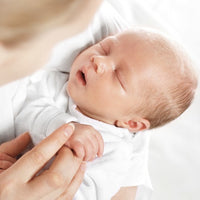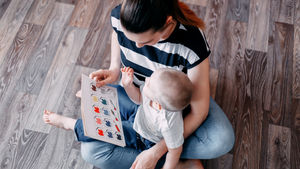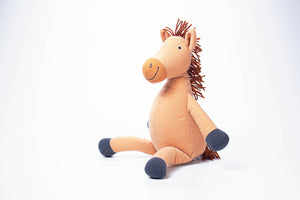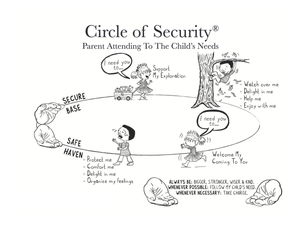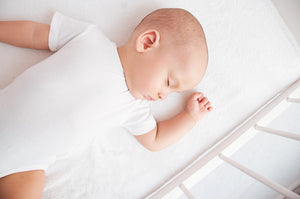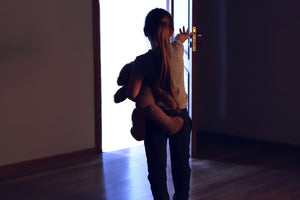Using comforters for settling your baby

Some babies just love to get up close and cuddly with a soft toy or comforter when they’re going to sleep. Interestingly, the formal name for a soft toy is a ‘transitional love object’, because they help infants to make the emotional transition from dependence to independence. [1]
Comforters are also a form of substitution for the parent for times when a baby is physically separated from their parent. This means that if the baby’s sleeping environment needs to change because they’re at daycare or the family is away from home, the comforter can be a consistent sleep association wherever the baby is settling.
What exactly is a comforter?
Comforters are generally a soft toy, blanket, doll or teddy which the child builds an attachment to. Sometimes it can be hard for parents to work out what it is exactly about a particular comforter which appeals to their child. But what’s important is that it’s important to the little person who gains so much from having their own special, emotionally soothing toy which gives them so much.
When is the best time to introduce a comforter to my baby?
Wait until your baby is at least seven months old before introducing a comforter. According to red nose guidelines, soft toys need to be kept out of a baby’s sleeping environment until they are aged over seven months. Soft toys can cover a baby’s nose and mouth and interfere with their breathing. Before seven months, the risk versus benefits from a soft toy are too high.
Between eight and nine months of age, babies start to progress through a stage of development where separation becomes very important. When a parent isn’t close or a stranger approaches, it’s normal for babies to become upset and seek reassurance from the people with whom they’ve built a strong attachment. When a baby builds an attachment to a particular toy or object, this can help them to manage separation from their main carers.
Does it mean my baby is insecure if they want a comforter?
It used to be thought that babies who emotionally attach to a soft toy were somehow more insecure or weak. However, there is no evidence to support this theory. What does support a baby’s emotional security is love and predictability in a parent’s responses. If your baby shows an interest in cuddling a safe, soft toy, then there’s no harm in supporting this.
What’s the best way to introduce a comforter to my baby?
You may find you don’t need to do anything very special. Your baby may just start to show interest in a particular toy and the decision has been made!
At first, you could try just giving your baby a comforter when they’re awake and playing, just so they become familiar with it. Each time your baby is settling for a sleep, have their comforter close and encourage them to hold onto it.
If you feel your baby would benefit from having a comforter, try:
- Giving your baby their comforter when they start to show tired signs. You may want to keep the toy in their cot, rather than have it around during their wakeful periods.
- Including the comforter as part of your final cuddling before settling your baby. Then placing the comforter in the cot with your baby when they go down for their sleeps.
- Make sure the comforter is around for all sleeps, both day and night.
- When your baby needs resettling, or wakes as they transition between sleep cycles, offer them their comforter. If you need to pick your baby up, have the comforter close and place it back into the cot as your baby goes back in.
Making sure a comforter is safe
It can be hard to know what constitutes a ‘safe’ comforter and won’t pose a risk to a baby’s safety. There is no clear evidence around safe sizes of comforters, other than them needing to be small enough not to cover a baby’s face.
Make a comforter has no:
- Button eyes.
- Button or other style batteries.
- Loose ‘toy’ parts or the comforter includes ‘toys’ with string even if hung across the cot.[2]
- Loose ties or ribbons.
- In-built ‘sound’ mechanisms. Toys which include white noise or ‘shshers’ are not safe to use in close proximity to a baby’s ears.
10 Practical tips to manage a comforter
- If your baby builds a strong attachment to a particular comforter, try having more than one in the house. It’s often easier to source the same toy just after it’s bought, rather than wait a few months to see if they’re still available.
- You may want to encourage a comforter which you can live with as well. If, for some reason, you find a particular soft toy irritating or unappealing, you could try persuading your baby to build an attachment to another kind of toy. But be prepared for your baby to have the final say!
- Keep a few of the same comforters on rotation. It can be enticing to pack one of the same types of comforters as a spare, or away ‘just in case’, but babies can often sense what’s familiar and what’s new. Comforters which have that ‘loved up’ exposure are often more familiar and soothing.
- Appreciate the usefulness of a comforter in your baby’s life. Some parents find that they can’t go anywhere without making sure the comforter comes along as well, but the benefits generally outweigh the disadvantages.
- Make sure your baby’s comforter is safe and doesn’t pose a safety risk. Button batteries, loose ties, buttons, small beads or parts which could break off are all dangerous to infants and small children. Comforters made from fabrics which are light, breathable and easy to wash are ideal.
- Try not to be swayed by advertising claims that a particular comforter guarantees improved sleep. Individual babies will form their own attachment to a particular toy and it’s often unclear why.
- Try not to worry if your baby starts sucking their thumb or fingers when they’re cuddling their comforter. Sucking is a normal and common way for babies and young children to self soothe. Speak with your dentist if you’re concerned about your baby’s teeth. Generally, thumb or finger sucking is not a problem unless the child continues into the years when their permanent teeth erupt.
- Throw away any comforter once it’s showing signs of wear and tear, even if you think it’s fixable.
- If you don’t have a spare comforter of the same make and model, do the best you can in terms of replacing it. Babies and young children are adaptable, often much more than we give them credit for. Even if you can’t find exactly the same style, sometimes near enough is good enough.
- Give the comforter a name so you can talk with your baby about where it is and giving it a cuddle. After only a short time, you’ll find your baby looks for it and will start to mimic the name.
One final tip about comforters!
Understand that no matter how attached your baby may be to their comforter, it’s not a replacement for you. Amongst all the other strategies you’ll use when you’re settling your baby, a comforter is just another part of the emotional support system your baby will need as they are growing.
About the Author:
Written for Safe Sleep Space by Jane Barry. Jane has qualifications in general, paediatric, immunisation, midwifery and child health nursing. She holds a Bachelor Degree in Applied Science (Nursing) and has almost 35 years specialist experience in child health nursing. She is a member of a number of professionally affiliated organisations including AHPRA, The Australasian Medical Writer’s Association and Australian College of Children and Young People’s Nurses.
References
https://rednose.org.au/article/soft-toys-in-the-cot
https://www.healthychildren.org/English/ages-stages/baby/Pages/Transitional-Objects.aspx
[1] https://www.healthychildren.org/English/ages-stages/baby/Pages/Transitional-Objects.aspx
